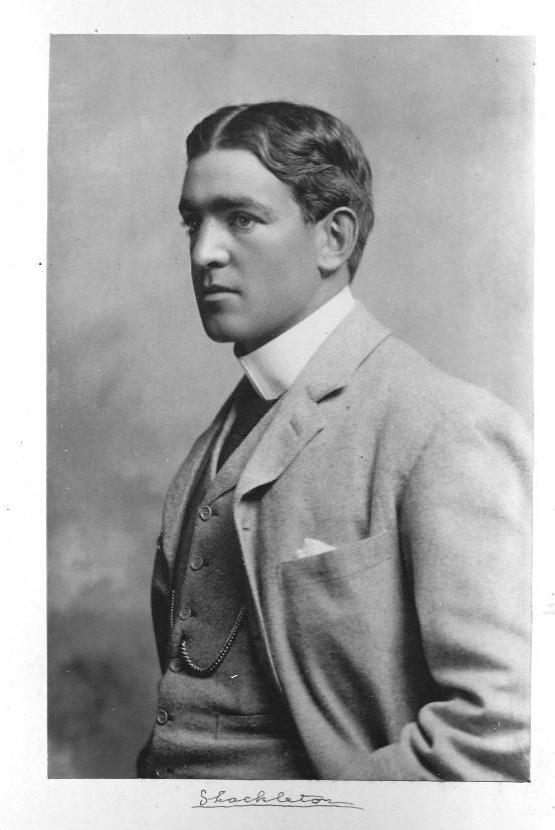June 2024 (Vol. 47, Number 12)
The Banner Says…
A link to Dundee’s exploration past comes home
-

Gracing our front cover: Gracing our front cover: Dunfermline Abbey. Photo: VisitScotland.
- It was 150 years ago (February 15, 1874) this year that a baby boy was born in County Kildare, Ireland. He was the second of ten children and at the age of 10 the young boy would move with his family to England. Ernest Shackleton would go on to join the merchant navy at just the age of 16 and a life of exploration and adventure was born.
Shackleton would go on to become a fellow of the Royal Geographical Society of London, and in 1901 he was chosen to go on an expedition to Antarctica led by Antarctic explorer Robert Falcon Scott. The iconic Dundee built Royal Research Ship (RRS) Discovery was made specifically for Antarctic research and launched in 1901. The wooden vessel was the UK’s first purpose-built Antarctic research ship, it was made for the ice and added to Dundee’s reputation for shipbuilding. RRS Discovery is now a popular attraction and permanently moored at Dundee’s Discovery Point alongside the incredible V&A Dundee.
The Boss
Its first venture to Antarctica carried both Robert Falcon Scott and Ernest Shackleton. Shackleton would then be chosen by Scott to take part in a sledging trek towards the South Pole. This was still early days of Polar exploration and they had basic provisions, but they managed to get closer to the Pole than anyone before them. Sadly weather, illness and inhospitable terrain forced them back and not realise their goals. Shackleton would of course not give up on his dream to make it to the South Pole and would go on to undertake a further three expeditions to the region and during those he inherited the nickname ‘The Boss’ due to his leadership qualities.
In 1904 Shackleton moved to Scotland and became Secretary of the Royal Scottish Geographical Society. Office life was not for him and left that role and turned to politics in Dundee but was unsuccessful with that. He also found employment at the Glasgow shipbuilders William Beardmore and Company. Mr Beardmore would go on to support one of Shakleton’s expeditions and have the Beardmore Glacier in Antarctica named in his honour.
Sir Ernest Shackleton

Sir Ernest Shackleton, as he would become, was knighted by King Edward VII. In 1921 the Quest was the fourth and final ship to carry Shackleton to the Antarctic. On January 5th 1922 Shackleton suffered a massive heart attack and died at the age of 47. He never did make it to the South Pole, though he did get close and less than 100 miles from his target. What Shackleton did do was leave a huge legacy of exploration and human endurance. He was laid to rest in South Georgia and his grave headstone is made of Scottish granite.
In this issue
Dunfermline may be Scotland’s newest city, it was awarded city status as part of Elizabeth II’s Platinum Jubilee Civic Honours in 2022, that does not stop it from having an incredible history and with a medieval past. Some of Dunfermline’s historic sites are waiting for you to explore and is an easy day trip from Edinburgh.
Greyfriars Bobby must be Scotland’s most famous dog and likely one of the most known, and loved, dogs in history. Some fascinating new images have been released of this faithful companion and one of Edinburgh’s most visited statues and graves. The story of Bobby is just another reason why there is nothing quite like man’s best friend.
Robert McVitie was born in Scotland in 1809. He had a recipe for success with his baking business in Edinburgh. The family business would go on to be a global brand that many of us can now enjoy whether back in the UK or at home internationally with tens of millions of biscuits being sent, and enjoyed, worldwide.
The Hope Cross
As we go to press the RRS Sir David Attenborough is travelling off the Falkland Islands coast bound for the UK. The icebreaker is travelling over 7,000 miles from the southern Atlantic Ocean. On board is a special piece of cargo, the cross from Shackleton’s Hope Point memorial. The Hope Cross was constructed at Grytviken whaling station in South Georgia by crew members of the Quest as a monument to Sir Ernest Shackleton following his death. Measuring almost 3 metres/10 feet tall by 1 metre/3 feet wide and weighing approximately 30kg/65lbs the cross will soon be able to be seen by many more than the few who make it each year to South Georgia.
There can be no place more fitting for Shackleton’s Hope Point memorial to be displayed than at Dundee’s Discovery Point museum; home of the RRS Discovery, the very ship that first carried Shackleton to Antarctica in 1901. This will be the first time it has been in the UK and allow a wider audience to view this important piece of Antarctic heritage and pay its respects to a legendary Polar explorer whose stories are revered the world over. The Hope Cross is due to arrive in Dundee in August and with it a part of Shackleton’s pioneering legacy is returning to Scotland.
Have you visited RRS Discovery? Do you have you any comments from the content in this month’s edition? Share your story with us by email, post, social media or at: www.scottishbanner.com/contact-us
#ScottishBanner, #TheBanner
The Scottish Banner is more reliant than ever on our readers helping us to provide you with our unique content by buying a copy of our publication, regardless if by print or digital subscription or at a retail outlet.
We appreciate your support and hope you enjoy this edition.
